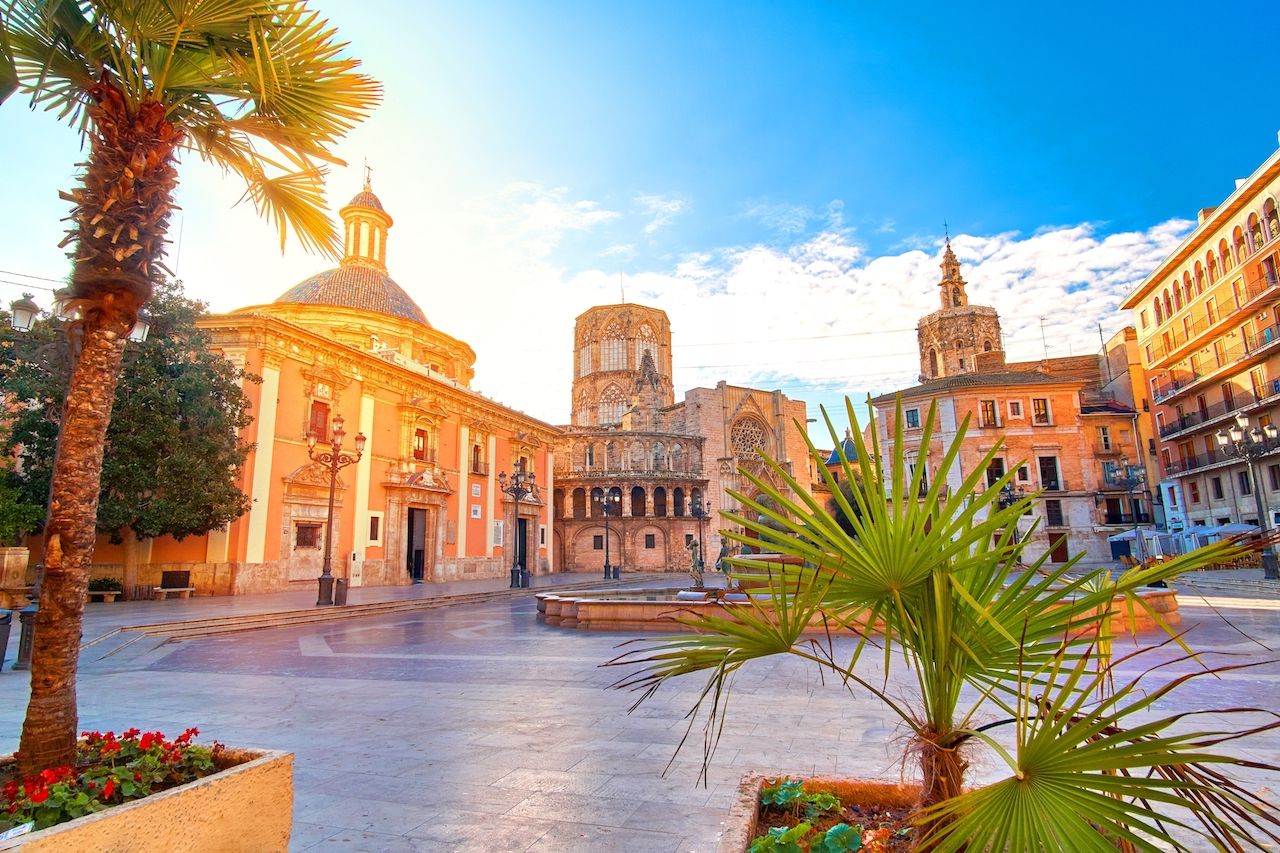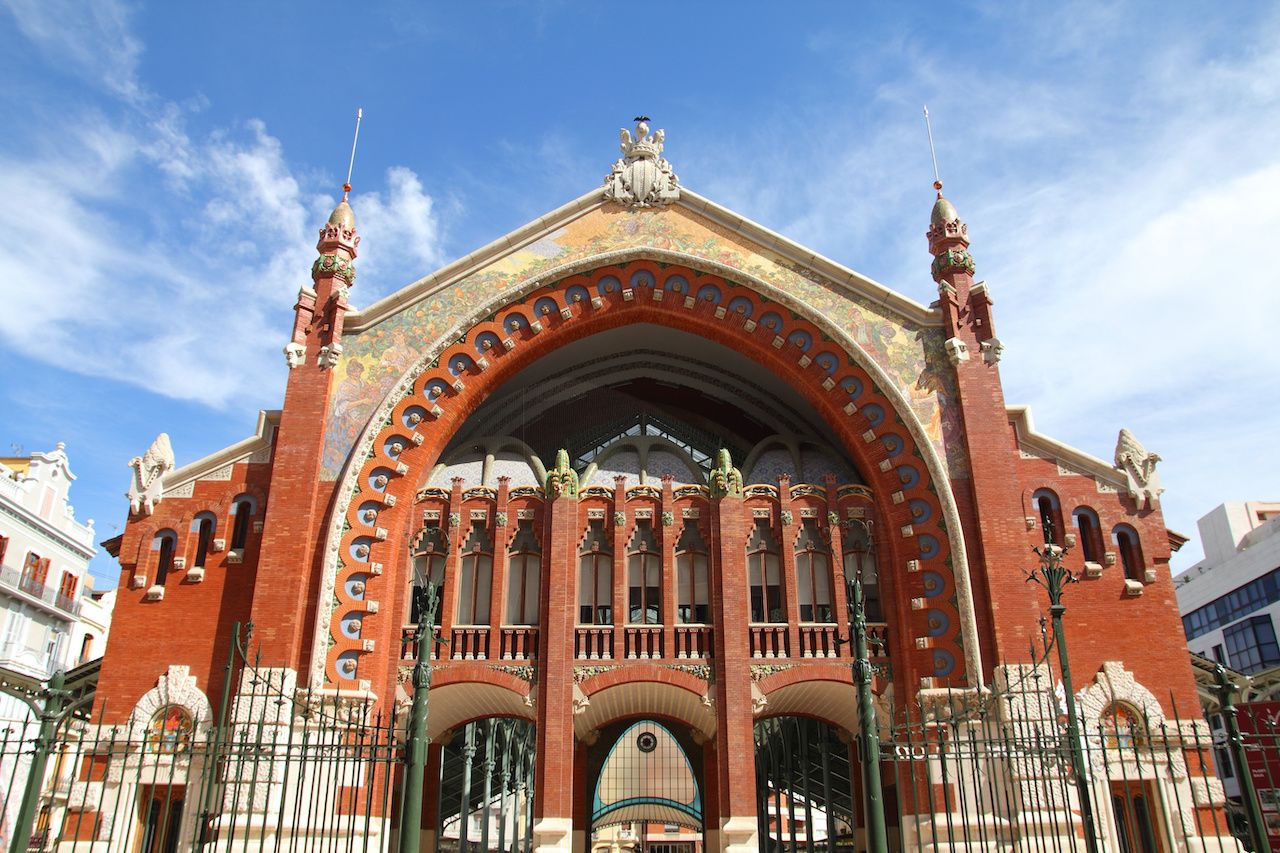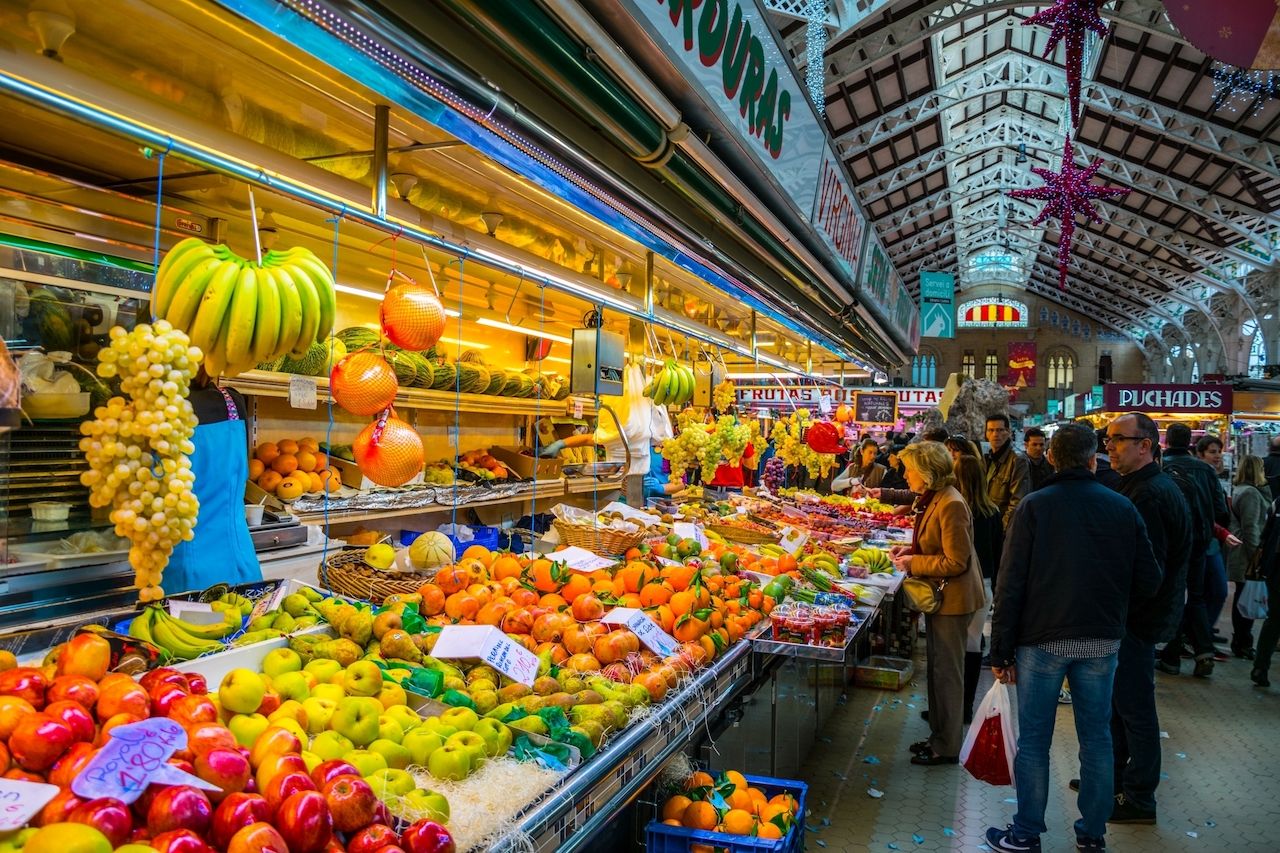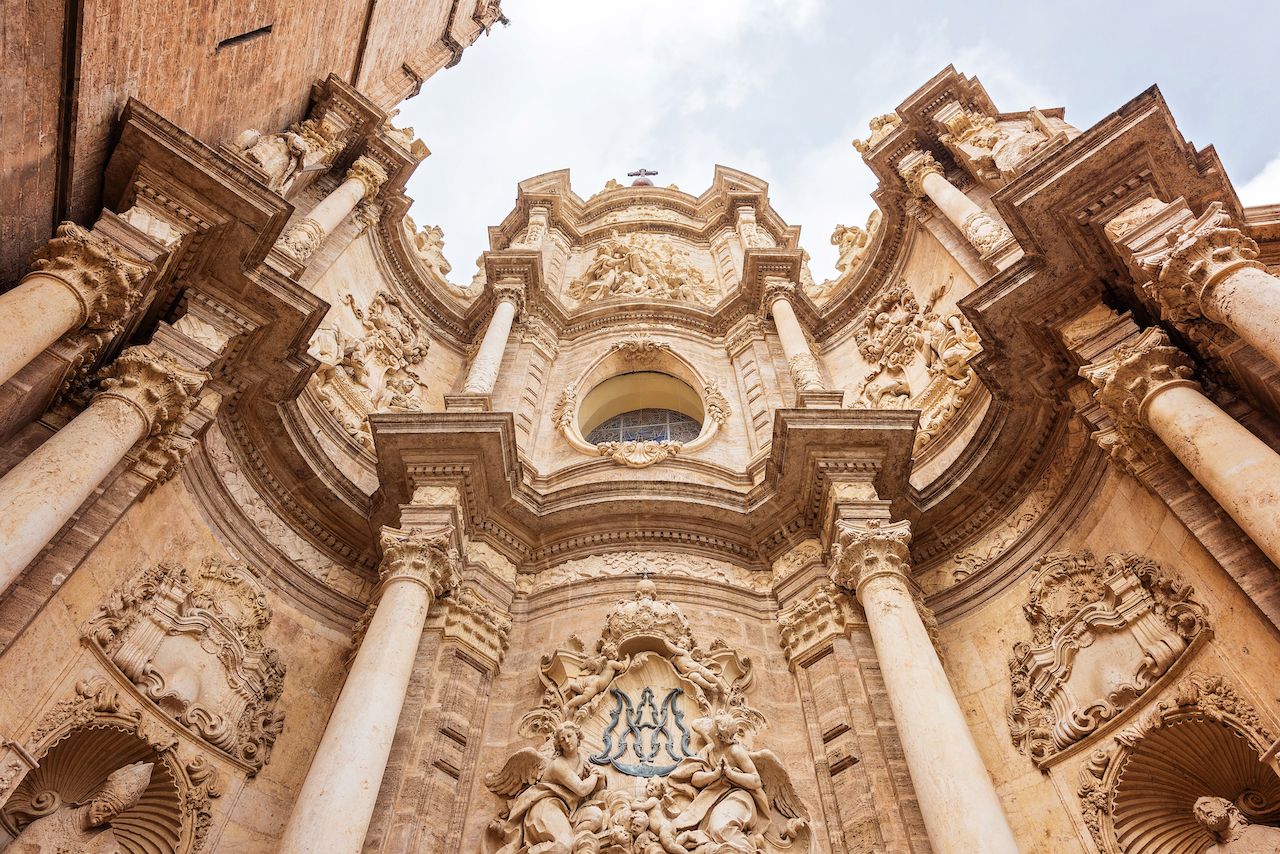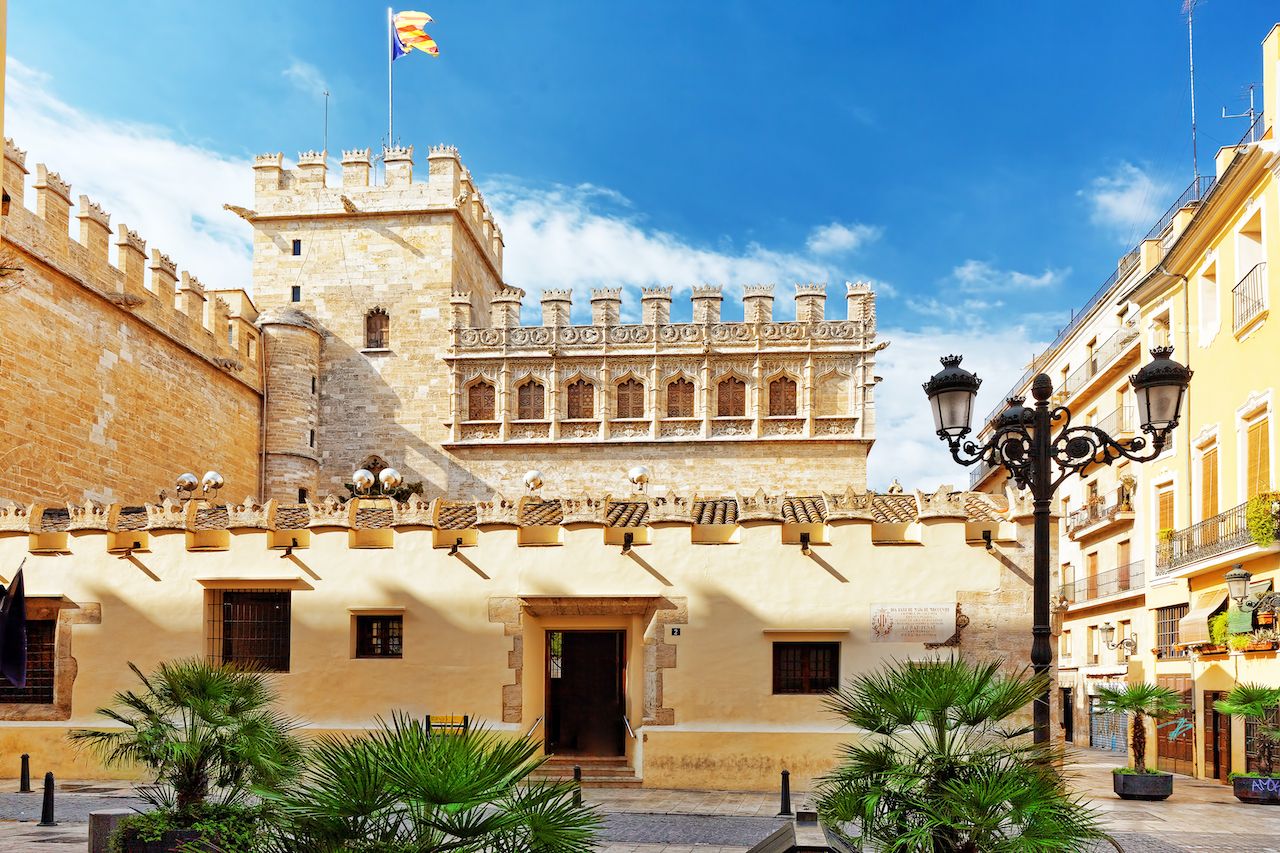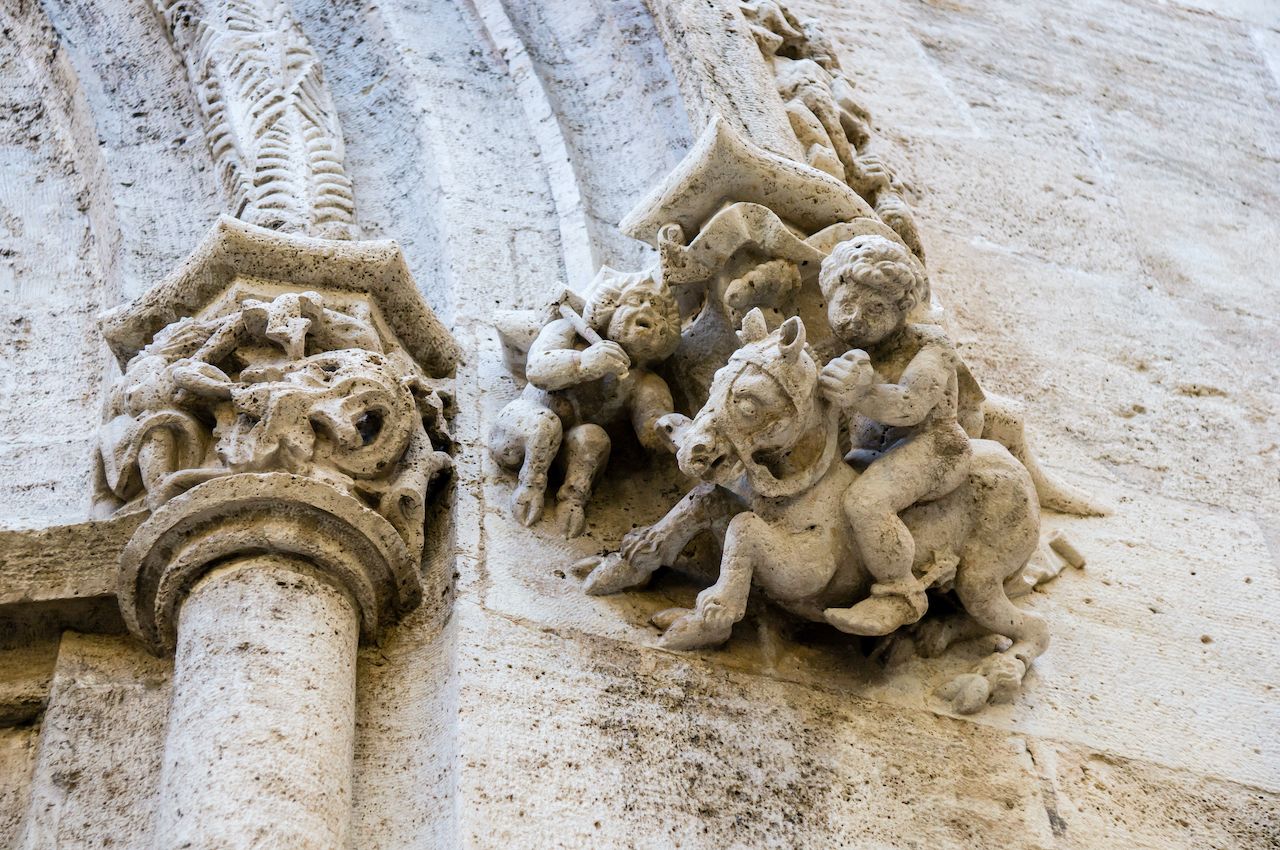Often thought of as just a neighboring city to Barcelona, Valencia doesn’t get nearly as much recognition as it deserves. The Mediterranean city has a rich history shaped by Roman, Islamic, and Christian influences that create a very unique, charming ambience with a strong sense of Old World European legacy. Peppered with cathedrals dating back to the 12th century, Valencia is a real treat for architecture lovers. The star of the city is St. Mary’s Cathedral. It draws a crowd from all corners of the world, eager to see the gemstone-embellished chalice that Jesus is said to have drank from during the Last Supper. This is just one of the city’s many old structures that look humble from the outside but have lavishly decorated interiors full of art.
A tour of Valencia’s old center feels much more like a journey through time as opposed to simply exploring a beautiful Spanish city. Here’s what to see and how to enjoy the city’s rich architecture.

